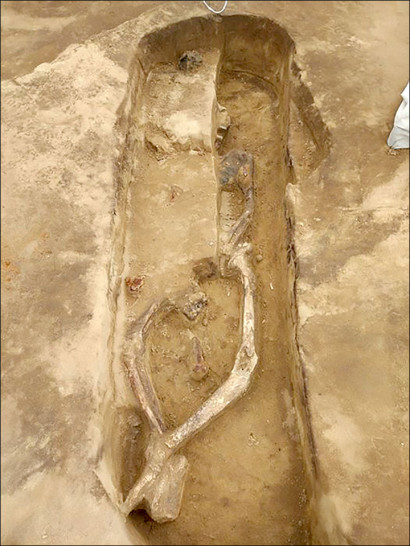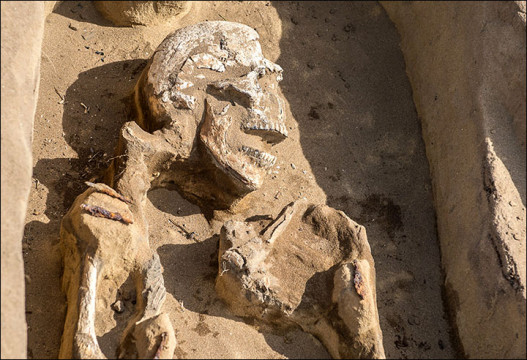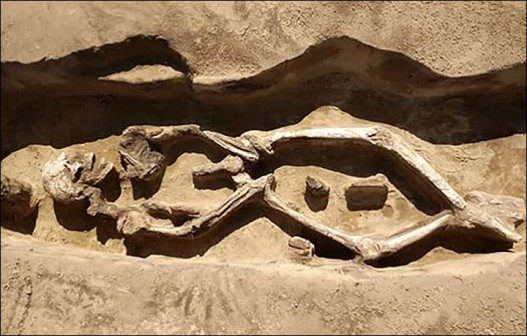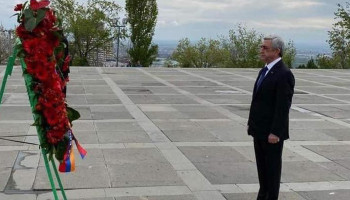Tied up in his grave, the strange 'dancing skeleton' of Ust-Ivanovka
 The ancient skeleton surprised archeologists because he appeared to be dancing when his grave was opened in Primosky Krai. Archeologist Denis Volkov, 35, said: 'We jokingly nicknamed this skeleton Mikhail. 'He amazed us with his pose - he had been laid to rest on his back, with his legs looking as if he was dancing. 'His feet were crossed and knees wide open. None of the known burial ceremonies include this position of a body.' The site is well known but emergency archeological excavations had to be carried out after serious flooding in 2013. 'We were struck by his unusual position,' said the scientist about the skeleton which dates from the 7th to the 9th centuries. 'The man was lying on his back, his legs were slightly crossed at his feet, his arms were crossed around his pelvis. 'We talked to forensic experts, anthropologists, and it got clear that if his legs were not tied, then his extremities would have straightened. Most likely, his arms were also tied.'It is possible that the man was shot to death by an arrow. 'Tips of arrows were put on his shoulders, perhaps, they were not in the person's body because they were lying quite high above the stones. I believe that arrows were put on his shoulders (as part of the burial ritual). 'Still, one of the tips is quite interesting, it's in the hip, very close to the bone, and perhaps, actually in the bone. 'It's hard to say yet. Perhaps, this tip was the reason why this person died. 'We know that there is a big artery in the hip, and if it's injured, it causes a big blood loss.'Anthropologists have concluded the man was 'short', no taller than 154 cm. 'Most likely it was a young man, younger than 30.' His grave was distinct from the others here, which were roughly circular in shape. Mikhail's was distinctly rectangular, and covered with white sand that was not local. Other graves were filled with skulls belonging to unusually elderly people for medieval times - aged from 50 to 70, at a time when life expectancy was far shorter. Work is underway to analyse the skeleton in Sweden to determine more about the 'dancer' from the dark ages. |





















